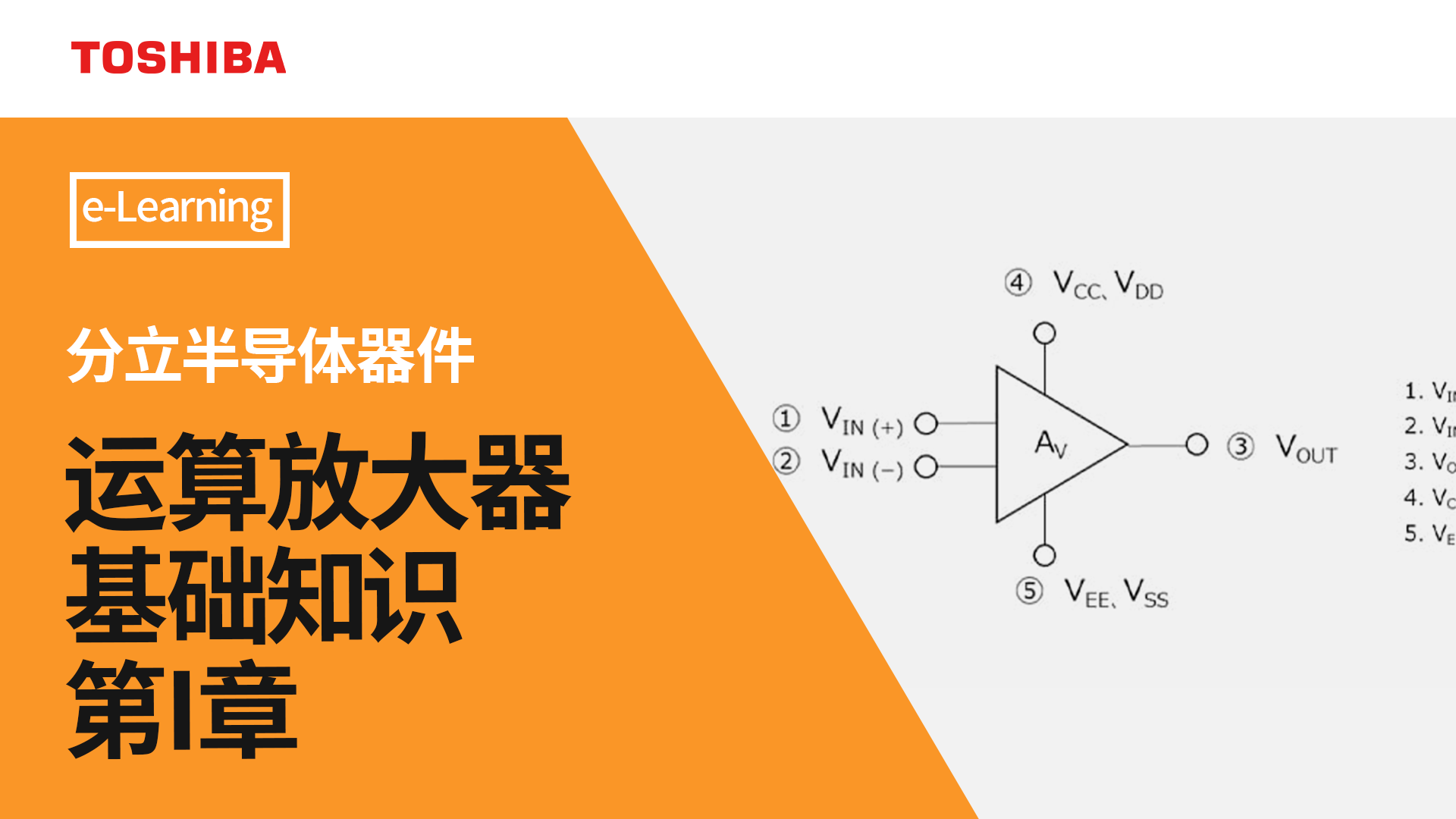- 型号 & 关键词搜索
- 交叉搜索
- 参数搜索
- 库存查询与购买
This webpage doesn't work with Internet Explorer. Please use the latest version of Google Chrome, Microsoft Edge, Mozilla Firefox or Safari.
请输入3个以上字符 Search for multiple part numbers fromhere.
The information presented in this cross reference is based on TOSHIBA's selection criteria and should be treated as a suggestion only. Please carefully review the latest versions of all relevant information on the TOSHIBA products, including without limitation data sheets and validate all operating parameters of the TOSHIBA products to ensure that the suggested TOSHIBA products are truly compatible with your design and application.Please note that this cross reference is based on TOSHIBA's estimate of compatibility with other manufacturers' products, based on other manufacturers' published data, at the time the data was collected.TOSHIBA is not responsible for any incorrect or incomplete information. Information is subject to change at any time without notice.
请输入3个以上字符
使用运算放大器等差分放大器的目的是什么? (共模抑制比:CMRR)
差分放大器主要用于抑制噪声。
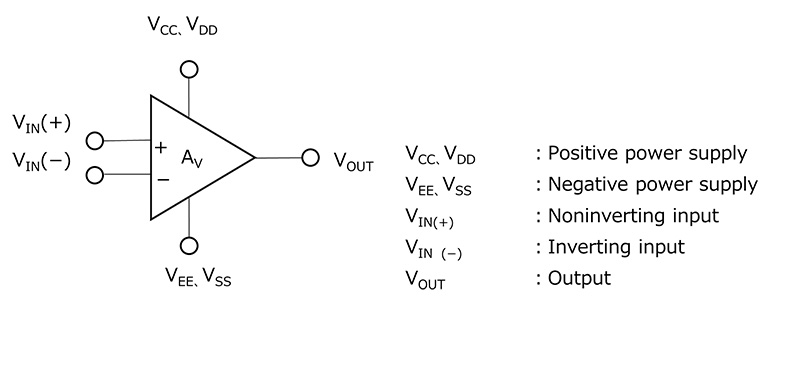
噪声包含典型噪声(差分噪声)和共模噪声。差分放大器放大两个输入端(同相输入端VIN (+) 和反相输入端VIN(-))之间的差异,因此很容易衰减将相同噪声施加到差分输入端子的共模噪声。.
产生共模噪声的主要原因有两个:
1、由于电磁感应等原因,电线和电缆中会产生噪声,从而导致信号源接地端与电路接地端之间产生电位差(即噪声)。
2、从其他电路流入电路接地端的电流会导致接地电位升高(噪声)。
VOUT =AV×[{VIN(+)+Vnoise} - {VIN(-)+Vnoise}]
=AV×{VIN(+) - VIN(-)}
上述1和2中,作为电路基准值的接地电位都会因噪声而波动。典型滤波器很难消除共模噪声。差分放大器可用来抑制共模噪声。
运算放大器可将这种差分放大器配置为主电路。下图1的符号表示差分放大器(运算放大器)。它有两个输入:VIN(+)和VIN(-)。输出电压等于两个输入端之间的电压差乘以放大器的增益(AV):
VOUT=AV× {VIN(+)-VIN(-)}
这样,叠加在运算放大器输入级上的共模噪声就被消除了。然而,如果噪声叠加在运算放大器的接地端(GND)或电源上,这种噪声会叠加在输出上。
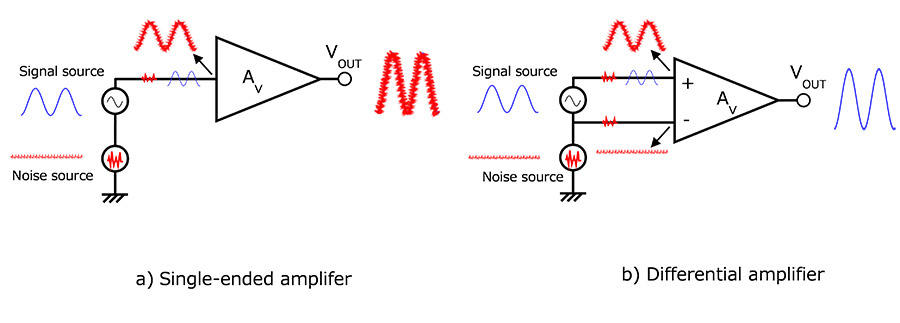
假设共模噪声(Vnoise)叠加在差分输入端,如图2(b)所示,则:
VIN(+)‘=VIN(+)+Vnoise
VIN(-)‘=VIN(-)+Vnoise
因此,输出表示如下。这表明差分放大器消除了共模噪声:
VOUT=AV×[ { VIN(+)+Vnoise }-{ VIN(-)+Vnoise } ]=AV×{ VIN(+)-VIN(-) }
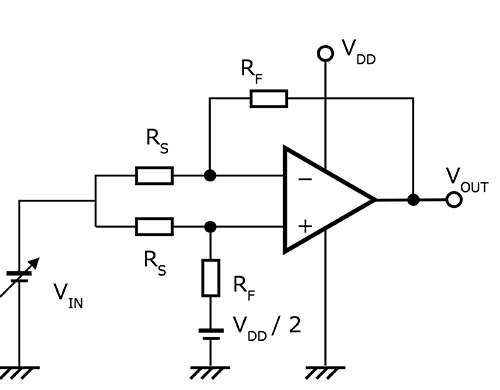
共模抑制比被视为运算放大器的电气特性之一。(参见数据表中的表-1电气特性示例)
CMRR是共模增益与差分增益之比。
理论上,运算放大器根本不会放大共模信号。然而,实际上,由于内部元件变化等影响,输出端存在共模信号的轻微影响。因此,CMRR是消除共模噪声的标准化措施。
该参数是输入电压由于输入补偿电压而导致的微小偏差。.
(请参考:什么是运算放大器的输入补偿电压?)
数据表中补偿电压定义,输入电压=VDD/2。不过,该电压不是固定值,而是随着输入电压的大小而变化。
因此,图3所示电路由以下公式定义。
CMRR=20×log( | ( VIN1-VIN2) / ( VOUT1-VOUT2 ) |×( RF+RS ) / RS )
当VIN = 0.0V时,VIN = VIN1,VOUT=VOUT1
当VIN=2.5V时,VIN =VIN2,VOUT=VOUT2
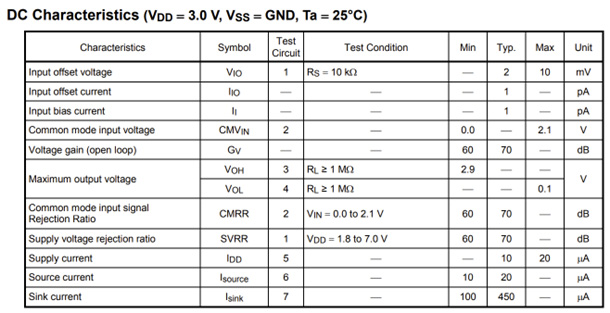
相关链接
以下文档也包含相关信息:



